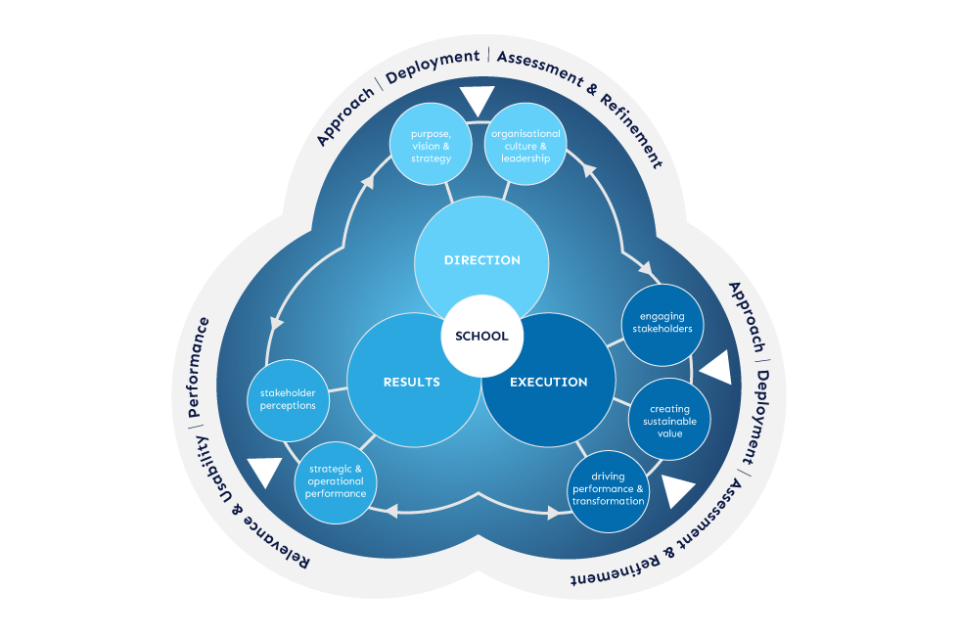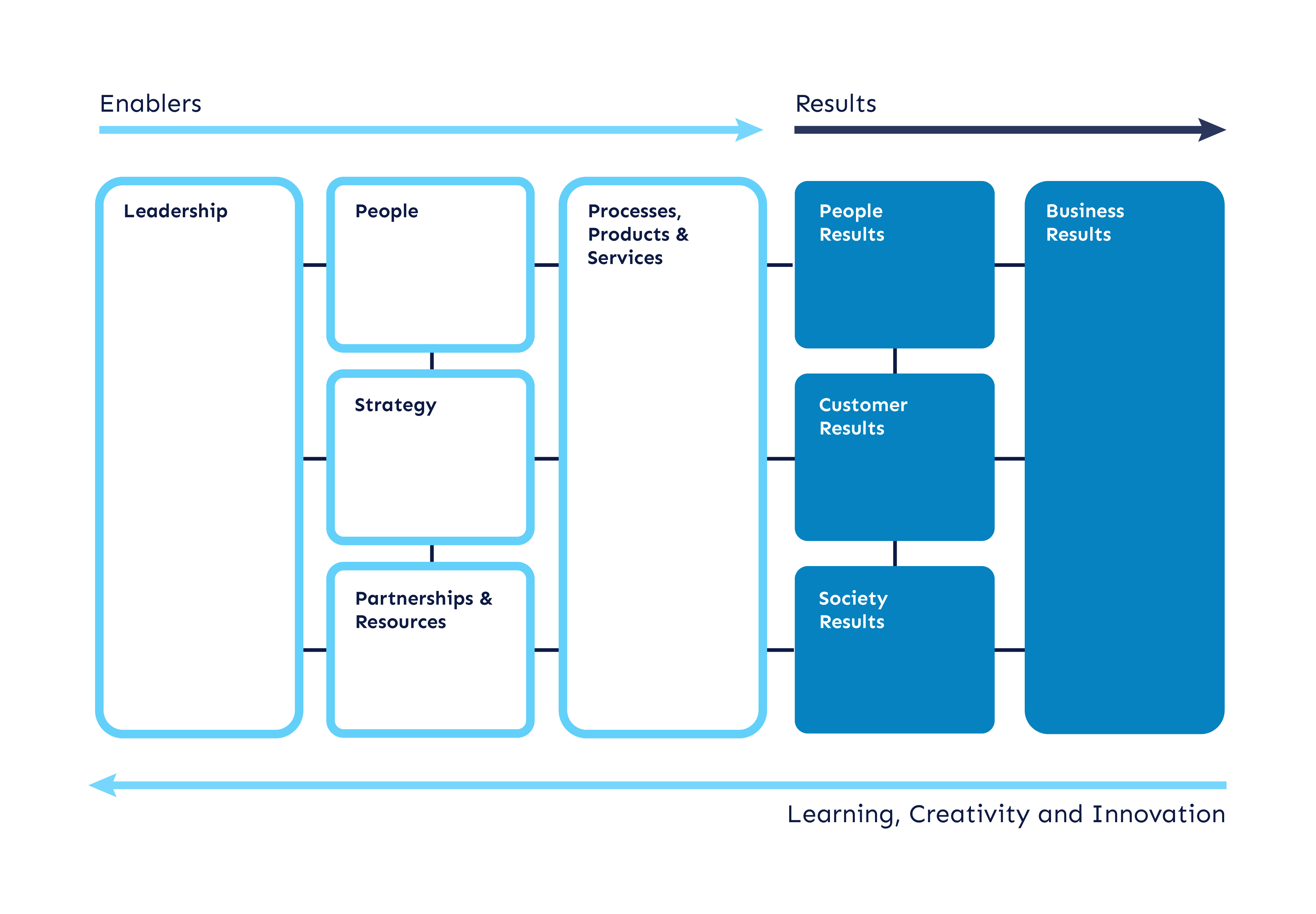Total Quality Manage...
18328 | 6 Apr 2023

Every organization implements various standards, models, and procedures in its operations. These can be prescribed by the state or serve as tools for achieving competitiveness in the market. The EFQM Business Excellence Model is a framework that provides guidance to the entire company in achieving its goals and finding daily solutions and ways to improve. Organizations are constantly engaged in a dynamic and ever-changing environment, with primary objectives revolving around profitability and sustainability. Sustainability cannot be achieved without quality and business excellence. To continually meet their goals, organizations need a set of principles and values that lead to product and service quality without unnecessary resource consumption. While numerous quality management models and tools exist, the EFQM Business Excellence model comprehensively addresses the topic of business excellence, guiding companies step by step toward achieving their strategic objectives.
The European Foundation for Quality Management (EFQM) of Excellence is a framework used by well-established companies, not just newcomers in the quality arena. It encompasses all the values of Total Quality Management (TQM) and allows companies to assess their achievements in embedding these values. This model is applicable to all types of organizations.
Business excellence involves systematic management to ensure excellent operating conditions for all stakeholders, ultimately leading to the best possible business outcomes. It requires continuous improvement in all aspects of operations and business results. EFQM is a self-assessment framework for measuring an organization's strengths and areas for improvement in all its activities. The term "excellence" is used because the model focuses on what the organization does or could do to provide excellent service or products to its customers, service users, or stakeholders. EFQM does not prescribe regulations and does not involve strict adherence to a set of rules or standards. However, it provides a broad and coherent set of assumptions about what is needed for a well-organized organization and its management. Each organization can use the model in its way for management and improvement under the control of those who use the methods, rather than external assessors.
To be successful, an organization must establish an appropriate management system or a comprehensive business model. The EFQM (European Foundation for Quality Management) Excellence Model is a practical tool that enables organizations to assess their progress toward excellence, identify improvement opportunities, guide them in strategic thinking and alignment, and provide a fundamental structure for their management system. The model aims to promote continuous improvement within organizations. The EFQM Model (2012 version) consists of three parts: fundamental principles of excellence, criteria, and the RADAR logic.
The fundamental principles of excellence set the main guidelines for achieving sustainable excellence within organizations and describe the organizational culture. These principles include:
The EFQM model encompasses nine criteria, five of which represent enablers (Leadership, People, Strategy, Partnerships and Resources, Processes, Products and Services). These criteria focus on what an organization must do to develop and implement its strategy. The other four criteria represent results (Results-Employees, Results-Customers, Results-Society, Results-Performance), reflecting the outcomes of the enablers, which are improved through feedback from the results.

Figure 1: EFQM Excellence Model Criteria (source: Kern, P., K., 2012)
Excellence is about elevating and upgrading all quality-related activities within an organization to reach the highest standards. It involves exceeding stakeholder expectations, surpassing averages, and striving for the best possible results. Achieving excellence means tangible accomplishments in both what an organization does and how it does it, with a sustained commitment to achieving outstanding results. The "4P" model for building excellence - Leadership, People, Partnerships and Teams, Processes, Products, and Organizational Excellence - emphasizes that excellent products and services result from embedding excellence in people, partnerships, and processes, with solid leadership as the foundation.
Excellence can be attained by:
In conclusion, the EFQM Business Excellence Model offers organizations a comprehensive framework for achieving excellence in their operations. It emphasizes the importance of principles such as adding value for customers, sustainability, and harnessing creativity and innovation. By using the EFQM Model, organizations can assess their strengths, identify areas for improvement, and continuously strive for excellence. The model's recent updates in 2020 further enhance its effectiveness in guiding organizations towards sustainable excellence. Achieving excellence is not just about what an organization does but also how it does it, with leadership and a commitment to quality at its core. Embracing the EFQM Model can lead to tangible improvements, exceeding stakeholder expectations, and long-term success in today's competitive business landscape.
What are your thoughts on the subject above? Feel free to post a comment or start a discussion.
TAGS: Business Excellence, EFQM Model, Quality Management, Total Quality Management (TQM), Organizational Excellence, Sustainability, Leadership, Continuous Improvement, Excellence Principles, Strategic Management, Stakeholder Engagement, Process Improvement, Customer Satisfaction, Innovation, Performance Measurement, Organizational Culture, Leadership Development, Business Strategy, Management Systems, European Foundation for Quality Management (EFQM), Corporate Excellence, Organizational Performance, Quality Assurance, Best Practices, Benchmarking, Employee Development, Resource Management, Business Process Optimization, Competitive Advantage, Service Quality.
Leave A Comment